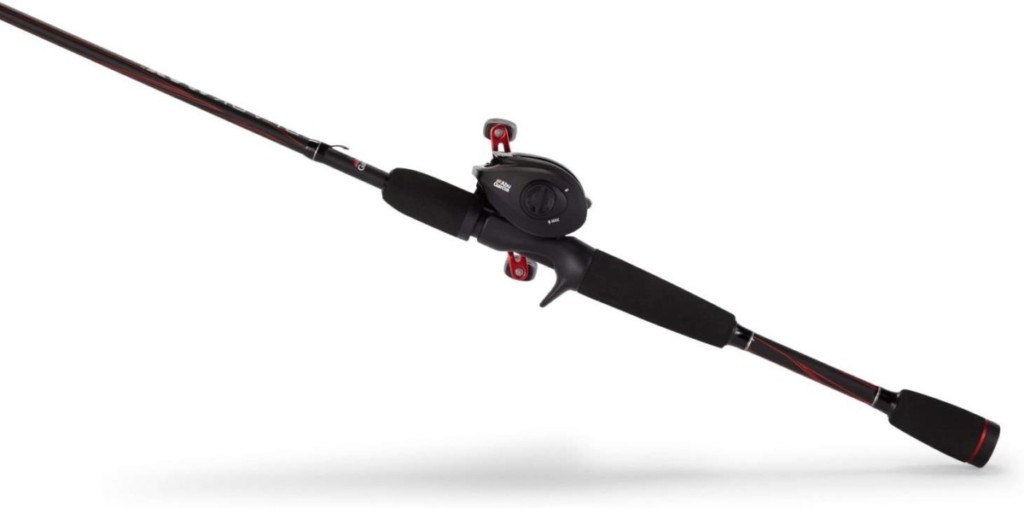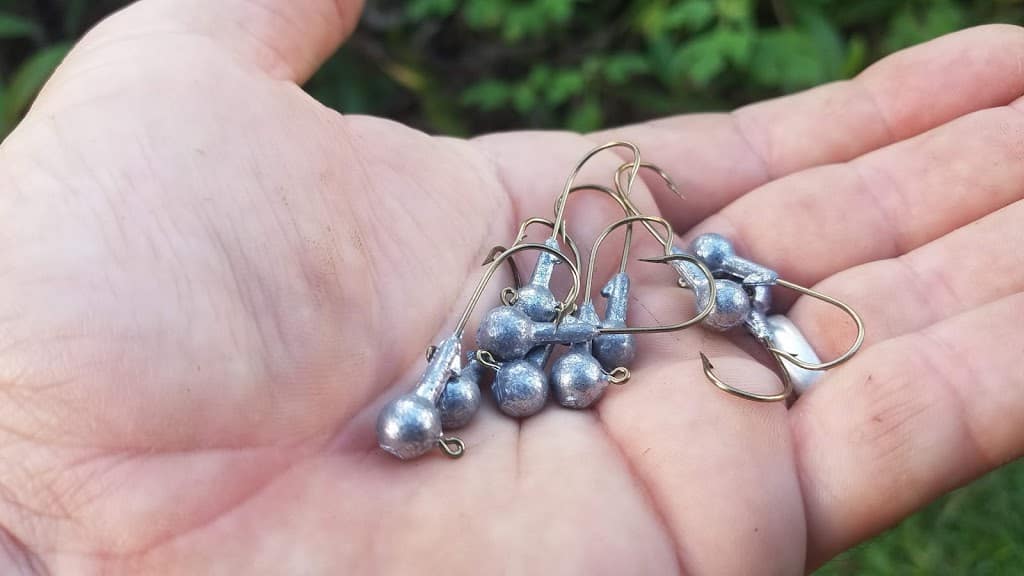One of the best things I like about Kayak fishing is the ability to troll while paddling to my main fishing spot. I have had some of my greatest success while trolling. It wasn’t like that when I was starting out. My lures would either get snagged or be floating too high on the surface. I could never get my lure to where the fish were.
Through trial and error and much research, I finally unraveled the secret to control my lure depth while fishing from a Kayak.
Several factors influence the depth of your lure while fishing from a kayak. Paddle speed, type of lure used, type of fishing line and how long you let out your line all contribute to how deep your lure will travel.
Once I learned this I stopped getting my line snagged while trolling and started to actually catch fish! Let’s explore the factors that control lure depth a little deeper so that you can increase your skill as a kayak fisherman. Trolling is a skill we should all have in our tackle box.
Best Type of Rod and Reel for Trolling
Before we begin trolling, we need to have the right equipment. While any rod and reel combo with the right lure setup will be effective, having the right rod and reel will make you unstoppable.

The best type of rod while trolling from a kayak is a medium action rod with a light tip. I like to have a rod that is either 7’ or 7½’ in length. If I am fishing in saltwater I will usually go with a rod with medium-heavy action.
While spinning rod and reel combos work great for trolling, I really love a baitcaster rod and reel setup. Baitcaster reels have a neat little feature that allows you to release line very easily while trolling. You can do the same with a spinning reel by loosening the drag and manually releasing line, but the baitcaster reel does this so much more effectively.
Location of Rod Holders for Trolling from a Kayak
There seem to be two methods people use to locate their rods for trolling. A side mount and forward mount.
Most fishing kayaks come equipped with flush mount rod holders located just behind the seat of the kayak. Unfortunately, the angle they are usually installed in lends themselves more for transporting rods than for luring while paddling. But that’s ok, you can change the orientation yourself.
If you have a kayak with preinstalled rod holders or are installing new ones, you can change the orientation so that the rod is more horizontal to the water and angled slightly towards the front of the kayak so that the rod will not slip out in the event of a large strike. This also allows you to grab the rod quickly in the event of a strike and to assess the rod tip while trolling.
Another option many anglers use is a forward mount for their rod holders. The rod holders are located in front of you in a vertical position. You are able to cast your line, insert your rod into the holder in front of you and paddle to your next destination, trolling your line behind you.
The advantage of this method is that you can better control your lure in the water column, control the length of your line effortlessly with a baitcaster reel, more easily assess the rod tips for strikes and quickly grab the pole when a strike does occur.
The main objective for placing your rod holders is for easy access and to be able to read the rod for strikes. The side mount can work really well for baits closer to the surface and the forward mount can have more control in the water column.
The Lure You Choose Will Control the Depth
The thing that affects the depth of your lure the most while trolling is the lure itself. Depending on where you are fishing determines the type of lure you’d want to choose. That choice mainly comes down to how deep the water is that you are trolling in. There are two types of lures that are most commonly used while trolling, the heavy jig and crankbait.
THE WEIGHTED JIG

A weighted jig is a hook with weight all in one. Normally you attach a rubber grubber to the hook or similar plastic lure. Attach the jig to your leader and you’re ready to go trolling. I like to use a ½ oz jig in waters that are up to 6’ deep. As I get into deeper water, I will vary the weight of the jig between ½ oz to 1 oz and everything in between to play with the depths.
The benefit of these jigs is that they want to sink and if you are fishing in open waters then this makes a perfect choice. The single hook makes it less likely to get snagged or pick up weeds. The drawback to the weighted jig is they do not travel through the water without much twitching or jerking. It is that motion that tends to catch the eye of the fish. When you stop paddling they will eventually sink to the bottom, risking you losing your jig if you are not careful.
CRANKBAITS

Crankbaits are a perfect lure for trolling. You can choose the depth they travel within the water based on the size of the lip that they come with. They have a natural swimming motion in the water and tend to be a bit erratic and jerky which tends to catch the fish’s attention. Many styles of crankbait lures are made to float so you don’t have to worry about them when you stop paddling.
To use the crankbaits just cast them of your kayak, let your line out to your desired length and begin paddling. No need to add extra weights to the line.
Other common lures include floating Rapala. They are great lures for fishing in shallow water and their erratic action is appealing to fish looking for their next meal. One of my favorites to troll with is the traditional spoon. Something about the silver glitter and erratic action, it makes fish go wild. Fisherman will also troll live bait, bait its normally as good as your bait is live, so be sure to check on your hook from time to time.
Your Speed Affects the Depth of your Lure
Not only does your weight and type of lure affect the depth your lure will travel, but the speed at which you paddle will as well. Most lures begin to show signs of life when travelling at 1.5 mph. The average kayaker can easily paddle 3 mph. So when trolling off a kayak, you have an optimal advantage of having your lure travel at the speed it was designed for.
The best way to confirm how fast you need to go would be to let your lure float just beside your kayak where you can see it and start paddling. Watch how it reacts at what speed. Then you simply let out your line and try and match the speed that made the lure work best.
The slower you travel the more your lure will sink, if its not designed to float of course. Obtaining that slow troll will require the kayak fisherman to really slow down their stroke. Varying your speed will allow you to move your lure through different elevations of the water column while trolling.
An extra benefit to trolling from a kayak is that your speed also tends to be erractic. That is the nature of a human powered engine. It’s easy to set a motor boat to coast at a constant speed, but not so easy to vary it up. It’s that variation that gives us kayak fisherman an advantage over other methods of fishing.
What Kind and How Much Line Do I Let Out?
General rule of thumb, the longer you can let your line out the better. By getting your lure as far away from your paddling kayak as possible, you get the advantage of stealth on your side. Not only is your kayak quiet if paddled correctly, but with your lure 75’ to 100’ from you, your kayak no longer even plays into the equation.
If you are in shallow water, the obvious choice would be to let out less line to minimize the chance of your lure getting deep enough to get snagged. However, you can get around that problem.
When trolling in shallow water you would want to use a monofilament line which is buoyant and a floating lure like a Rapala. Then you can let out your line as long as you want because you will not have to worry about it getting snagged.
For deep water trolling, braided line with a weighted jig or crankbait is preferred. It runs deeper than mono and is more sensitive to those light nibbles, enabling you to have more success setting your hook. Having a depth finder will help you determine how long of a line you really can let out.
When in doubt, I like to try and obtain a length of line in the 75’ to 100’ range, then slowly let out my line. If I feel bottom, I’ll reel it in 10’ or so and try again.
Wow! Who knew there could be so much involved with controlling your lure depth while trolling? With these things in mind you now have more to add to your fisherman’s tackle box. Less snagged lines and more caught fish make every fisherman happy.
Enjoy the catch!!
